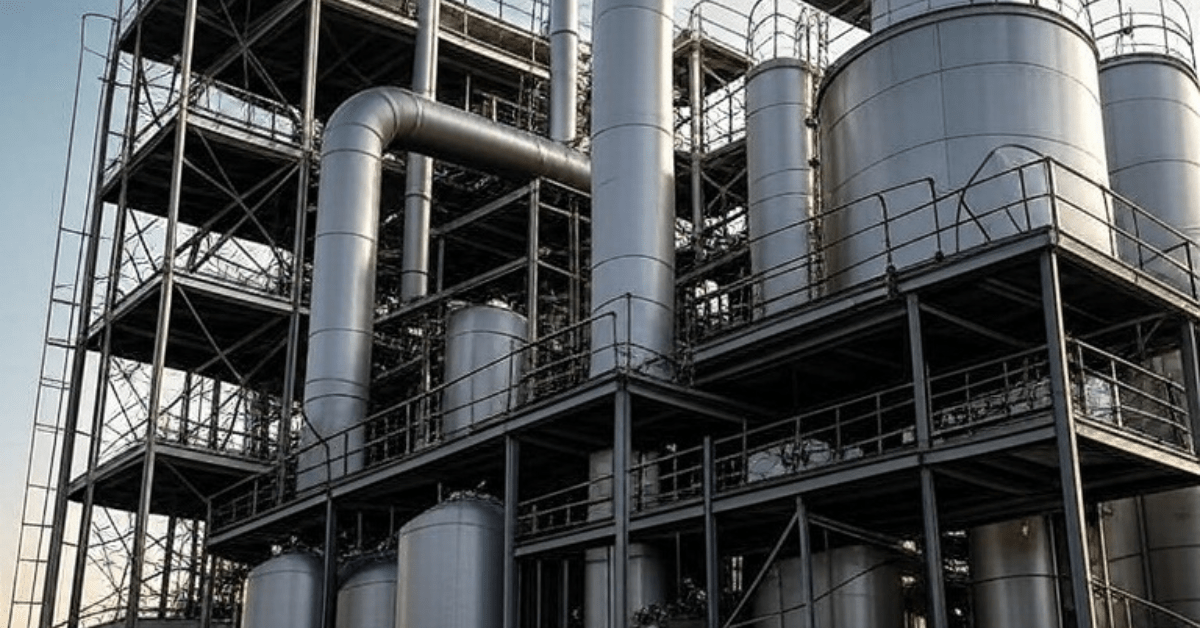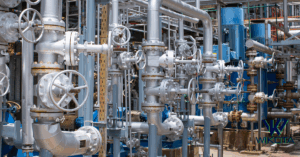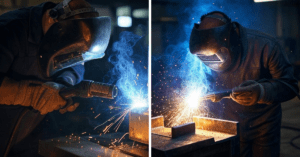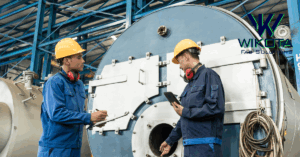As climate change continues to be a pressing global issue, the need for sustainable practices in industry has never been more critical. One of the most impactful methods for reducing greenhouse gas emissions is CO₂ capture systems fabrication—a process that creates specialized equipment to trap and contain carbon dioxide before it enters the atmosphere. These systems are key to helping industries reduce their carbon footprint and contribute to a cleaner, more sustainable planet. In this blog post, we’ll explore the importance of CO₂ capture systems, the fabrication process, and the role these systems play in environmental responsibility.
What Are CO₂ Capture Systems?
CO₂ capture systems are designed to capture and contain carbon dioxide emissions produced by industrial processes, such as energy production, manufacturing, and chemical processing. By preventing CO₂ from being released into the atmosphere, these systems help reduce the greenhouse effect, which contributes to global warming and climate change.
CO₂ capture systems are typically deployed in high-emission facilities, where they trap carbon dioxide at its source. Once captured, the CO₂ can either be stored in underground facilities or utilized in processes such as enhanced oil recovery, where it is injected into oil fields to help extract remaining oil.
The Importance of CO₂ Capture Systems in Environmental Responsibility
With global CO₂ levels rising, capturing and reducing carbon emissions is essential for a sustainable future. Here are some of the key reasons why CO₂ capture systems are a vital component of environmental responsibility:
- Reducing Greenhouse Gas Emissions
CO₂ capture systems are one of the most effective ways to mitigate greenhouse gas emissions from industrial sources. By capturing CO₂ at its source, these systems prevent it from entering the atmosphere, thereby slowing the rate of global warming. Industries with large carbon footprints, such as power generation and heavy manufacturing, can significantly reduce their environmental impact by adopting CO₂ capture technology.
- Supporting Clean Energy Transition
As the world moves towards renewable energy sources, CO₂ capture systems can play a critical role in making fossil fuel-based facilities more sustainable. By capturing carbon emissions, traditional energy facilities can reduce their impact on the environment, supporting the transition to a cleaner energy economy. CO₂ capture systems also make it possible to use bioenergy (such as biomass) sustainably by capturing and storing any CO₂ released during energy production.
- Improving Public Health
Lowering CO₂ emissions has a direct impact on air quality, which can lead to improved public health. CO₂ capture systems not only reduce the release of carbon dioxide but often work alongside systems that reduce other harmful pollutants. Cleaner air contributes to fewer respiratory issues, cardiovascular problems, and overall health improvements for communities near industrial areas.
- Economic Benefits and Job Creation
The fabrication of CO₂ capture systems creates jobs and stimulates economic growth by supporting a growing industry focused on sustainability. As demand for carbon capture technology rises, it opens up opportunities in manufacturing, engineering, and maintenance, creating a skilled workforce dedicated to environmental preservation.
Key Components of CO₂ Capture Systems Fabrication
Fabricating a CO₂ capture system involves several critical components and technologies. Each part plays a unique role in capturing, processing, and storing carbon dioxide. Here’s a closer look at some of the essential elements involved in CO₂ capture systems fabrication:
– Absorption Units: Absorption is one of the most common methods for capturing CO₂, where it’s absorbed by a liquid solvent. Fabrication of these units requires precision to ensure effective CO₂ separation and efficient operation.
– Adsorption Towers: In adsorption systems, CO₂ is captured by a solid material, such as activated carbon. Towers are built with various adsorbent materials that trap CO₂ molecules as gas flows through them, offering an alternative to liquid absorption.
– Membrane Separation Modules: Membranes are used to separate CO₂ from other gases based on molecule size or solubility. Membrane modules are compact and cost-effective, requiring careful fabrication to achieve the desired efficiency in CO₂ separation.
– Cryogenic Distillation Chambers: Cryogenic distillation captures CO₂ by cooling it to very low temperatures, separating it from other gases. These chambers require high-quality materials to withstand extreme temperatures and ensure long-term durability.
– Compression and Storage Systems: Once CO₂ is captured, it is often compressed and stored for transport or sequestration. Fabricating these storage systems involves designing safe, secure units that can handle high-pressure CO₂ without leakage.
Techniques in CO₂ Capture Systems Fabrication
Fabricating a CO₂ capture system requires advanced techniques and high-precision tools. Here are some of the main fabrication techniques used:
- Cutting and Welding
Precision cutting and welding are essential to create the complex structures within a CO₂ capture system. These techniques ensure that each component fits securely, supporting the overall integrity and performance of the system. Laser cutting and TIG welding are common choices in fabricating absorption units, towers, and chambers.
- Machining for High Precision
Machining is crucial for manufacturing components with precise dimensions, such as valves, compression units, and membrane modules. CNC machines are often used in CO₂ capture systems fabrication to achieve the exact specifications needed for high-performance equipment.
- Metal Forming and Bending
Forming and bending are used to create custom parts like absorption columns and pipes, which must withstand the high pressures and temperatures of CO₂ capture. Hydraulic press brakes and roll benders ensure precise shaping without compromising the material’s strength.
- Surface Treatments and Coating
Surface treatments protect components from corrosion, especially in high-humidity environments where CO₂ and other gases are present. Coatings such as powder coating, galvanizing, or epoxy ensure that systems are resilient, reducing maintenance needs and extending the equipment’s life.
- Quality Control and Testing
Quality control is an integral part of CO₂ capture systems fabrication. Systems must be thoroughly tested for leaks, structural integrity, and overall performance. Non-destructive testing (NDT) methods like ultrasonic testing and pressure tests ensure that each system meets safety and efficiency standards.
Future of CO₂ Capture Systems Fabrication
As technology evolves, CO₂ capture systems are becoming more efficient, cost-effective, and environmentally friendly. Emerging innovations, such as advanced membrane materials, AI-driven monitoring, and modular designs, are enhancing the performance of CO₂ capture systems while making them more accessible to a wider range of industries. Additionally, the growth of the carbon capture and storage (CCS) industry has led to increased investment and research, paving the way for breakthroughs in CO₂ capture technology.
Conclusion
The fabrication of CO₂ capture systems is vital to achieving environmental responsibility and supporting a sustainable future. By investing in high-quality, effective CO₂ capture systems, industries can reduce their carbon emissions, protect public health, and contribute to the global effort to combat climate change. The fabrication process—from cutting and welding to precision machining and quality control—ensures that these systems perform at the highest level, capturing CO₂ and minimizing its environmental impact.
As the demand for cleaner air and sustainable practices grows, CO₂ capture systems fabrication will continue to play a key role in reducing carbon footprints across industries. By partnering with skilled fabricators who understand the intricacies of CO₂ capture, companies can align their operations with environmental goals, demonstrating their commitment to a healthier planet for generations to come.
Ready to power your next project? Explore our Fabrication Services and let’s build something strong together.
Contact us today to learn how Wikota’s Fab Shop can help with your fabrication needs.
Serving North America – We ship completed projects anywhere in the US.




